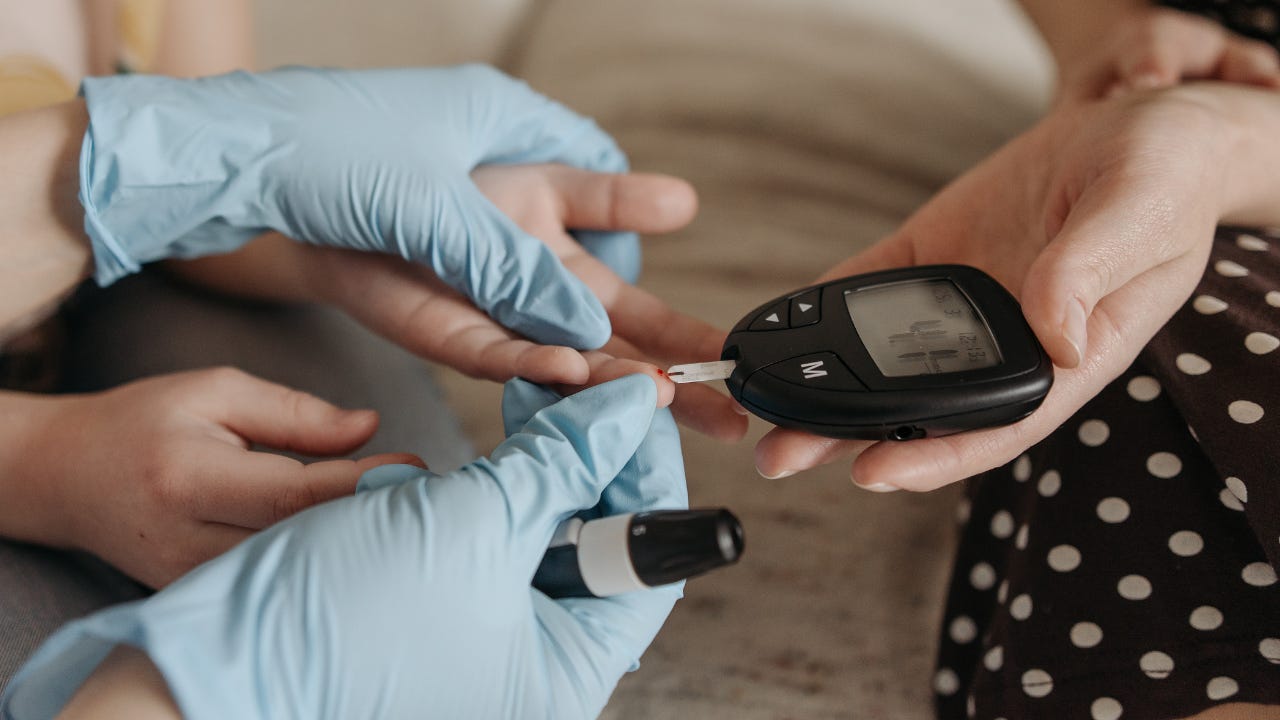Iron-diabetes link: new insights emerge from Nigerian patient study
Expert view on iron overload in association with insulin resistance in Type 2 Diabetes Mellitus patients with abnormal haemoglobin in Nigeria.
May 22, 2025

Iron overload (IO) has been shown to increase the risk of insulin resistance (IR) and type 2 diabetes mellitus (T2DM) in apparently healthy individuals without T2DM. These associations are not clearly understood and were therefore investigated among Nigerian diabetics with abnormal haemoglobin. A total of 210 adults aged 25-80 years (comprising 100 T2DM and 104 Control) were enrolled into this case-control study. The T2DM and Control group were subdivided into normal haemoglobin-HbA (NHbT2DM and NHbControl) and abnormal haemoglobin consisting of HbAC, HbAS, HbCC and HbSC (AHbT2DM and AHbControl), respectively.
The study concluded that IO and IR may not be associated with abnormal haemoglobin in Nigerians.
Haemoglobinopathies are prevalent in different populations in clinical practice. They are classified according to abnormal heaemogobin structure and defective globin chains. Varying frequencies of normal (HbAA) (71–80%) and abnormal haemoglobin — HbAS (20-25%), HbAC (0-2%), HbSS (0-1%) — have been reported in Nigeria. In Sub-Saharan Africa, the prevalent variant of abnormal haemoglobin is HbAS while thalassemia is predominant in the Mediterranean and Asia.
Blood transfusion which is indicated in individuals with haemoglobin disorders could disrupt iron homeostasis with complications of iron overload (IO). Iron overload and insulin resistance have been implicated in the pathogenesis of T2DM. It is postulated that in haematological diseases of genetic origin, IO may cause resistance to insulin culminating in the disease cluster of T2DM. Ferritin is a measure of IO, thus raised ferritin levels may increase the risk of T2DM in sickle-cell disease as demonstrated by Kunutsor. This is contrary to the findings of Orban. Akinlade et al. showed that HbSS persons had better responsiveness to insulin than HbAA individuals who had defective beta cell activity. These associations require further investigations.
Additionally, iron overload may result in deposition of iron in the pancreas. This leads to increased total body iron stores, which could damage the endocrine glands resulting in insulin resistance and disruption of glucose homeostasis but requires further investigation.
METHODOLOGY*
Study design
The design of study is a Case Control Study with approval by the Joint Ethical Committee of the tertiary hospital in Ibadan, Nigeria.
Sample collection
Blood (10mL) was obtained from each participant after an overnight fast. Plasma glucose was estimated enzymatically, HbA1c and haemoglobin genotype by HPLC. Ferritin (measure of IO) and insulin by ELISA while Homeostatic Model Assessment of Insulin Resistance (HOMA-IR) was calculated.
STATISTICAL ANALYSIS
Data was analysed by 21.0 version of Statistical Package for Social Sciences (SPSS). Normally distributed of variables that are quantifiable were demonstrated by mean ± standard deviation while data not distributed normally displayed by mean ± standard error of mean (SEM). All variables that are definite were obtainable in percentage by means of relative frequencies and total (n) values. Statistical significance was defined by p value < 0.05.
RESULTS
In T2DM and Control, IO (37.3, 24.2, 23.8 and 10.0%) and IR (24.0, 12.0, 1.2 and 0.0%) were observed in NHbT2DM, AHbT2DM, NHbControl and AHbControl, respectively. The ferritin levels were similar between T2DM and Control irrespective of the haemoglobin variants for NHbT2DM, AHbT2DM, NHbControl and AHbControl (189.8±19.7, 161.5±28.3, 165.1±15.5 and 151.4±36.0ng/mL), respectively. Insulin (8.2±1.5 vs 3.8±0.8μIU/mL) and HOMA-IR (2.7±0.6 vs 1.3±0.3) levels were higher in NHbT2DM than AHbT2DM, respectively. Ferritin correlated positively with HbA1c (r=0.342; p=0.005) in NHbT2DM and negatively with HOMA-IR and glucose (r= -0.216 and -0.294; p=0.049, 0.007), respectively in NHbControl.
DISCUSSION
Iron overload increases the risk of diabetes, resistance to insulin and cardiovascular diseases in apparently healthy individuals without diabetes (12). The association between iron overload and diabetes is recognized in persons with haemoglobin disorders (5). In this study, iron overload was observed in Cases and Control with NHb and AHb (NHbT2DM {37.3%}; AHbT2DM {24.2%}) and NHbControl {23.8%; AHbControl {10.0%}). This result is consistent with the report of Baldwin et al. (13) who stated high serum ferritin in individuals with haemoglobin disorder and diabetes. The proportion of iron overload is reduced in T2DM and Control with abnormal haemoglobin.
Individuals with abnormal haemoglobin are likely to have decreased iron overload indication.
The proportion of insulin resistance was higher in normal than abnormal haemoglobin in T2DM and Control. This agrees with Akinlade et al. who observed that sickle cell anaemic patient had better insulin sensitivity when compared with HbAA adult. However, insulin resistance was not found in Control with abnormal haemoglobin (AHbControl) despite the load of iron observed.
CONCLUSION
Iron overload and insulin resistance may not be associated with abnormal haemoglobin in Nigerians, however, further studies are required in apparently healthy Nigerians. Hence, Type 2 diabetes mellitus persons with abnormal haemoglobin may possibly protect against the effect of iron overload and insulin resistance, but further studies are required in apparently healthy Nigerians.
*References available upon request.
Credits:
Funmilola Aduke Mapayi, Total Healthcare Diagnostics Limited, Ibadan, Nigeria
Mabel Ayebatonyo Charles-Davies, Department of Chemical Pathology, College of Medicine, University of Ibadan, Nigeria.
Taiwo Rachel Kotila, Department of Haematology, College of Medicine, University of Ibadan, Nigeria.
Jokotade Oluremilekun Adeleye, Department of Medicine, College of Medicine, University of Ibadan, Nigeria.
Matthew Ogunlakin, Department of Chemical Pathology, College of Medicine, University of Ibadan, Nigeria.
Emmanuel Oluyemi Agbedana, Department of Chemical Pathology, College of Medicine, University of Ibadan, Nigeria.


